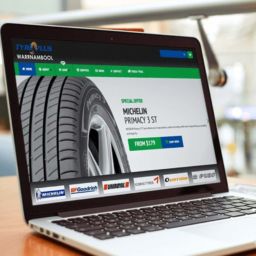Patience is a virtue, but when it comes to web surfing, fast website loading is very important to every visitor. The load speed has a huge impact on the web traffic, conversions and ultimately on the sales. Web page load affects both SEO and user experience.
In the past Google used different factors to determine the relevance of websites and this relevance was used for ranking all the websites in their search engine results. Page load time is now one of the most important elements for this ranking. Of course, this is not the only thing that matters, but it can sometimes ruin your website’s reputation despite the good content and design. If the bounce rate is very high, which is usually what happens when the page load is slow, this will affect your SEO. According to some statistics, users wait for about 3 seconds before they turn off the site and use other website.
UX – User Experience
Sometimes the loading speed can initially be good, but opening certain pages or certain elements on your website can be slow. This is something that will ruin user experience and leave your potential customers disappointed.
Improving YOUR Website Speed
First of all, determine the loading speed of your website. You can use many free tools like Google Webmaster Tools to find out more about this. After that, you can take some of these steps.
- Site layout
Make sure that the content is compatible with the layout. Generally speaking, you should avoid placing large images on your website because this can slow down the loading process. It is best to use images that have between 500 and 800 pixels. You can also use slide shows where users can maximize the image after they click on it. Furthermore, you need to make sure that the visitors can easily navigate through your website. Separate the content in suitable categories and clearly mark these categories. This is something that will surely improve the speed.
- Check the code
It is crucial to eliminate all HTML and CSS elements that are not needed and that are not used. In addition, you should also take care of the plugins and Java Script elements. RSS feeds, comments, stats, these are some of the plugins and elements that every website has. However, you should look for elements that are more efficient and you should avoid using plugins that do the same job. For instance, you don’t need to have three elements that will provide analytics. Regularly check the code and remove outdated and old code. Finally, review and eliminate inline styles and style sheets that you no longer use.
- Taking Care of Mobile Users
Since the use of mobile devices for web surfing is growing rapidly, it is very important to check and improve the website speed for mobile users too. Flash elements, large font and image files, large videos are some of the things that you should avoid. You need to create a responsive website that will be equally fast for all users.
- Check Your Hosting Provider
One of the most common reasons behind a slow or sluggish website speed is based on the fact the website is hosted in a far away country on a shared server with thousands of other websites.
No offence to GoDaddy, Crazy Domains or ANY of the other international hosting providers, but the website hosting plan they have organised for you probably isn’t the ideal solution for your brand new website. Even worse is if you’re running multiple websites running on the same plan! Shared hosting means you SHARE resources. That means that there are hundreds of sites like yours all fighting for resources on the same machine.
At Warrnambool’s No. 1 Web Design Company we offer affordable dedicated hosting packages that are located in Australia. (Data Centres are in Sydney). The only websites on my server are websites that have been created by us! (BUG FREE & RISK FREE). We offer 99.9% uptime guarantee, local Australian support (no longer do you have to call India, USA or Dubai to solve your hosting problems) and as I mentioned 100% Australian Hosting which means it is up to 5x faster (if not more) than an international hosting company.
















